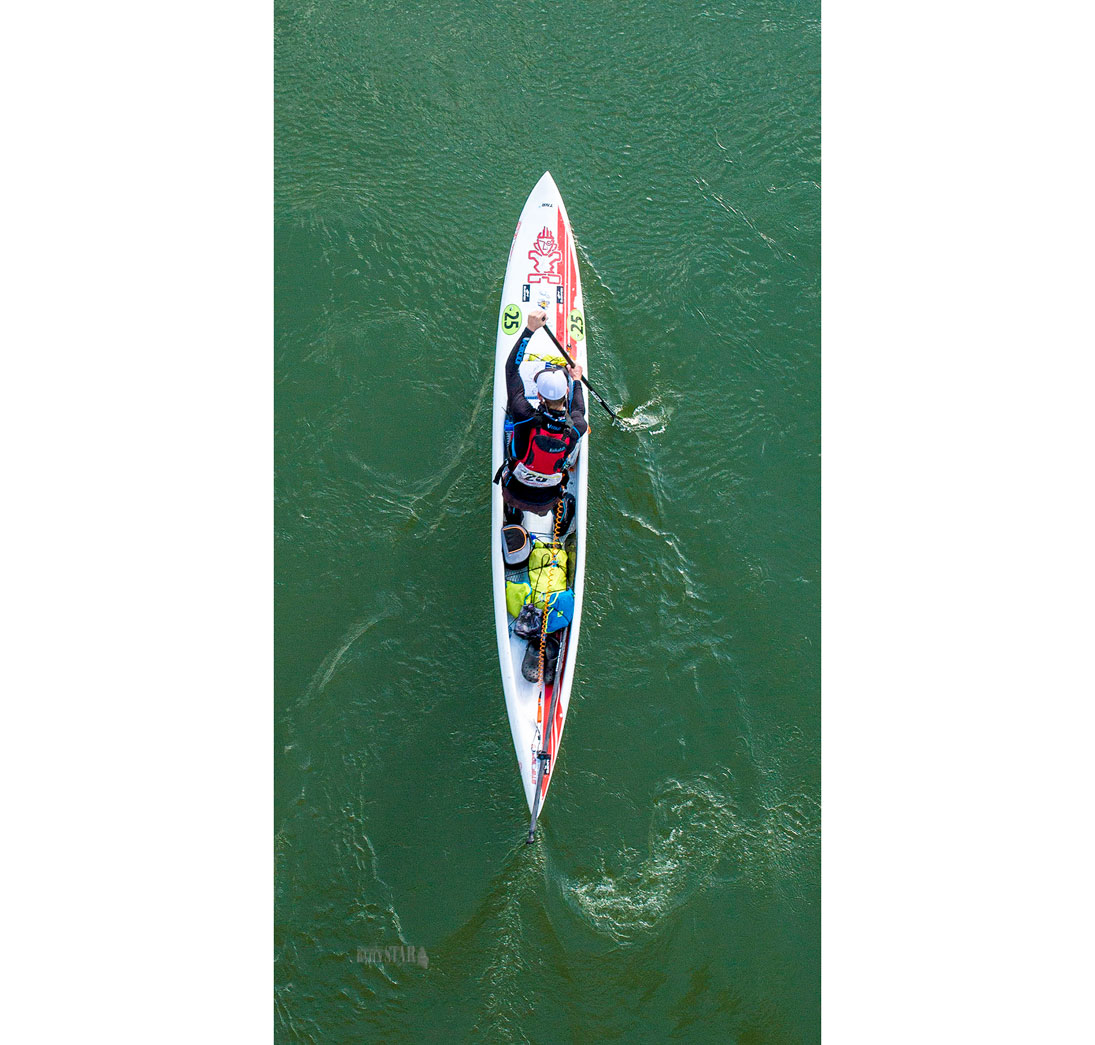Standup paddleboards to become official Yukon River Quest class in 2017
Standup paddleboards will once again be lining up on the Yukon River Quest start line, but in 2017, they will be recognized as an official class.
By Marissa Tiel on October 12, 2016
Standup paddleboards will once again be lining up on the Yukon River Quest start line, but in 2017, they will be recognized as an official class.
The Yukon River Quest (YRQ) announced on their Facebook page yesterday afternoon that the board had approved new rules, including the addition of standup paddlerboards (SUP) and C-4 (four-person canoe) as official classes in 2017.
“It’s an up-and-coming sport. There’s a lot of interest in SUP,” said YRQ board member Peter Coates. “”There is interest. There is demand and there is no real apparent reason not to.”
Two years ago in the biannual Yukon 1000, a 1000-mile paddling race from Whitehorse to Alaska, which Coates organizes, he had a couple SUPs finish the race. And in the summer, there were 11 SUPs that began the YRQ. Nine of them finished, with three coming in under the 55-hour mark, which would have qualified them for cash prizes if they had been recognized as an official class.
“They’ve proved themselves,” said Coates. “Let them in.”
The two standup paddleboarders not to finish were U.K.’s Joanne Hamilton Vale, who was easy to spot in her eccentric spandex and Tony Bain.
Hamilton Vale pulled out at the Little Salmon Checkpoint after Lake Laberge. She believed that she had contracted a parasite from drinking river water and was unable to keep down food or water.
Bain ended his journey at Little Salmon as well when he thought he wouldn’t make the cutoff time.
The lead paddleboarders worked together during the race and other boats seemed to welcome them as they allowed the SUPs to draft.
One of the main concerns other boaters and even spectators had was how SUPs would be able to stand for more than 55 hours.
“The legs, most people think it’s difficult, but I think what’s more difficult is sitting down,” said Hawaii’s Bart de Zwart.
“It’s just perspective I think.”
De Zwart and Canadians Norm Hann and Jason Bennett stayed close during the race.
“If you are racing each other for 55 hours, you beat yourself up. So we sprinted away and we just saw who was faster,” said de Zwart. “Then the last 10 hours ... I felt really good and I noticed the other two didn’t feel so good, so I just put the hammer down and well, the hammer was 13 hours long.”
De Zwart was the first paddleboarder to glide into Dawson City just after 4:30 a.m. Saturday morning. He raised his paddle in the air in celebration when he saw the finish line. His official time: 54 hours, 41 minutes and 14 seconds.
Hann and Bennett followed about 15 minutes later. All finished under 55 hours, an accomplishment in a low water year.
The Yukon River Quest remains the world’s longest annual race for SUPs. The next comparable races would be Missouri’s 350-mile race of the Netherlands’ SUP City 11 tour.
For the 2017 edition of the YRQ, the SUPs will be part of the 30 entry solo boat cap.
“It’s really just going to be first come, first serve,” said Whitehorse’s Stuart Knaack, who was among the first group of SUPs to complete the River Quest in the summer.
He plans on signing up again.
The more SUPs that sign up, the better times we can get, said Knaack, referencing how the lead SUPs worked together to paddle down the river.
His advice for those paddleboarders considering the YRQ: “Think of it as a race, not as an adventure race, even though it is an adventure.”
With official status, SUPs will be eligible for prize money in 2017.
The other new class that was added was C-4, which Coates said is gaining popularity out east. The C-4s will be included in the voyageur category, but will not count towards the voyageur cap, which will be lowered to 15 in 2017.
The change is to accommodate the congestion at the Carmacks Checkpoint. There, all the boats can be removed from the water except the voyageurs, which are moored along the shore.
Coates predicts that the C-4s will be competitive with the six or eight person voyageurs.
In this year’s race, the 100 boat entry cap was met early and there were 95 boats on the start line, the most in the race’s history.
That 100 boat cap isn’t likely to change due to space at the start in Whitehorse, the finish in Dawson and Carmacks Checkpoint.
The three-hour mandatory checkpoint had a new location this year at Coffee Creek Kaminak Camp.
“This was very good this year,” said Coates. “Racers liked it. That’s going to stay the same.”
Registration for the 2017 Yukon River Quest opens on Nov. 1.
The Yukon River Quest will begin on June 28, 2017.

Be the first to comment